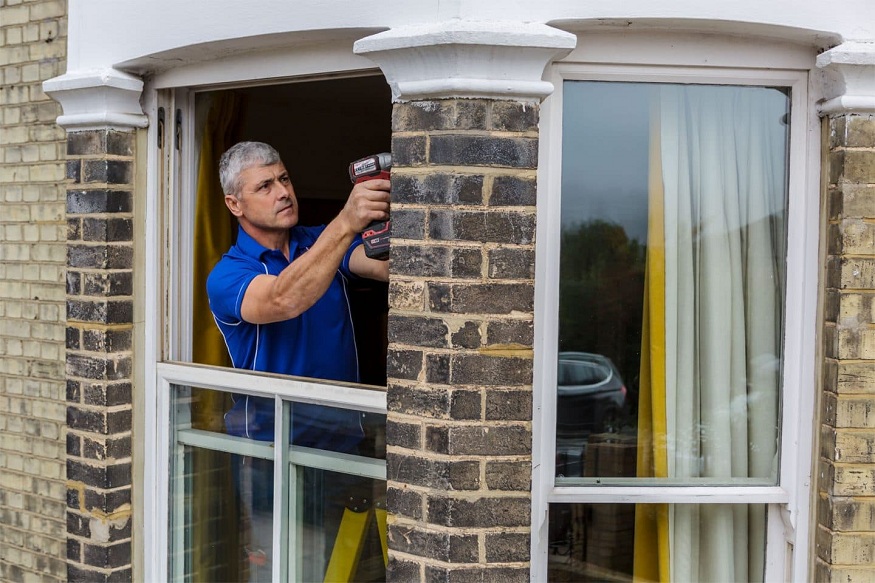Double glazing: our guide to choosing it & installing it

How to choose double glazing? 3 criteria to take into account
It is undeniable today, this equipment has many particularly attractive advantages , when it comes to equipping yourself. But this choice should not be made lightly, and different criteria should be considered before placing an order! Here are the main ones.
1. The type of glass
Double glazing is not content to embed two layers ensuring better energy performance. It goes much further, by being available on the market in many types of glasses , all providing very specific characteristics .
The sound version , for its part, goes in the direction of comfort and acoustic insulation, and has a thicker glass on the outside, ensuring better insulation against noise ;
The solar protection model , on the other hand, filters and ensures better management of the contribution of the rays and the heat of the sun, thanks to an additional specific anti-UV and IR treatment, on the interior face of the exterior glass;
Tinted or printed glass provides protection from vis-à-vis and prying eyes;
Finally, the reinforced insulating model (VIR) has a transparent layer, composed of silver atoms and deposited on the internal face of one of the glasses, by a vacuum sputtering process. This thin layer reflects the radiation of the heat from the heating , allowing it to remain inside the housing, by a shield effect. On the other hand, it lets in the light and the heat of the sun . It is found under different names: ITF (Reinforced Thermal Insulation), Low Emissive Glazing…
2. Thickness
Secondly, one of the main criteria for selecting glass is, of course, its thickness. Linked to the dimensions of the glasses, this has a direct influence on the weight of the equipment , which must also be taken into account. And this, a fortiori, in the case of joinery or old masonry which could require reinforcements to support the whole.
enlightened Single glass weighs 10 Kg per m², for 4 mm thickness, and 15 Kg for 6 mm. For his colleague, these values can be multiplied by 2.5 , depending on the thickness of the different layers!
The composition of the panes is generally defined by three numbers (e.g.: 4/16/4, 4/6/4, 10/6/4, 10/10/4…). The first and last numbers indicate the thickness of the glass , in millimeters, and the middle number corresponds to the thickness of the space trapping air between the two layers . It may happen that the first digit is greater than the last. This then means that the glass is calibrated for better sound insulation, or that it is laminated and treated to limit break-ins.
Although one may automatically want to install the thickest double glazing possible, various variables should be taken into account in order to be properly equipped. The existing windows determine the space available in the rabbet; some old carpentry actually does not allow opting for a technology that is too heavy or too thick. The region of residence is also decisive in the choice of glass: you will not opt for the same configuration if your region is more sunny and arid than cold or humid.
3. If applicable: the type of joinery to be installed
Changing windows is a project in its own right, which can sometimes involve the partial or total replacement of windows in a home. More expensive, this repair is generally economical and amortized over the long term , and is accompanied by a choice of materials. This choice can then leave more freedom as to the decision concerning the type of glass mentioned above.
Wood : very appreciated for its aesthetic side, it is more expensive, for a better power of insulation;
PVC : requiring no maintenance, PVC is particularly appreciated for its low cost ;
Aluminum : ideal for large formats, its insulating power is between that of wood and PVC.
This equipment provides many advantages, the main one being -by far- that it allows drastic energy savings , estimated between 10 to more than 25%, for heating and air conditioning . Beyond these strengths:
It is a very good sound insulator . The layers of air or neutral gas (argon, xenon, krypton, etc.) trapped between the two panes provide perfect insulation against noise pollution;
It is also a very good thermal insulator . It captures and diffuses the heat in your interior, and works in one direction, preventing it from coming out. Good to know: gas has a slightly higher thermal insulation coefficient than air;
It does not provide a cold sensation to the touch of the internal glass (which remains at ambient room temperature), and also eliminates the phenomena of condensation ;
It considerably increases security and acts as a burglar retardant, insofar as it is much less easy to break than simple glazing. This character can be reinforced by an additional anti-burglary treatment , which can withstand up to several tens of sledgehammers before yielding);
It’s cleaner ! Indeed, some treatments add self- cleaning filters which, combined with the action of solar UV rays, are capable of degrading the dirt which is then eliminated without a trace by rainwater.
However, and in addition to its higher price, the main disadvantage of double glazing is that it can be particularly heavy , sometimes involving the installation of high-performance ball bearings for sliding windows. The work to install it can then be relatively substantial.







